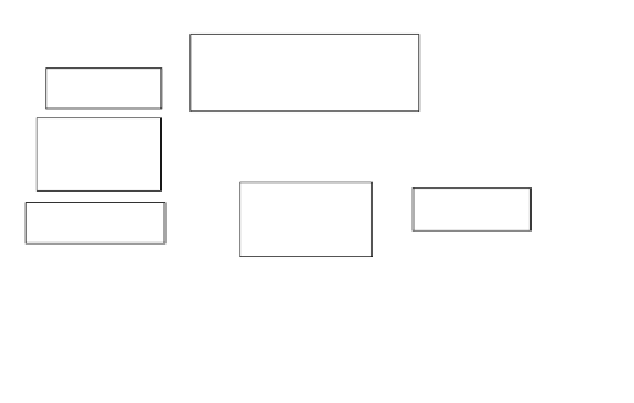Geoscience Reference
In-Depth Information
Chesapeake Bay Program Structure
Executive Council
Principals' Staff Committee
High-Ranking
Govt officials
Citizens Adv.
Scientific and
Technical Adv.
Input at high level
Implementation
Committee
Fed Agencies
Local Govt Adv.
Air
Quality
“97 Nutrient
Reevaluation”
Budget
Steering
Data
Center
GIS
Subcommittees: nutrient, toxic, monitoring, modeling, living resources, land, growth
and stewardship
FIGURE 8.7
Example of lagoon implementation program structure. (Modified from U.S.
EPA, 1997.)
public and private entities are sufficient to implement the new plan with little
additional infrastructure necessary. On the other hand, the complexity of inter-
jurisdictional boundaries and issues may dictate the creation of a new “coordinating
entity” to direct and evaluate progress. The following examples are used to show
the diversity of infrastructures dealing with lagoon management.
The function and structure of infrastructure committees and working groups are
paramount to their effectiveness and therefore should be established and evaluated
according to the depth and breadth to which they address their focus area. Each
committee or workgroup should address a nonoverlapping task or issue and set goals,
objectives, and specific action items with target dates. The committees are generally
composed of working-level government staff and organizations or associations,
which actually implement these tasks within the context of each respective program's
responsibilities. Each of these committees develops, coordinates, and ensures the
implementation of an important aspect of lagoon restoration.
An example of a structure established primarily for the administration and
management of a lagoon system is shown in Figure 8.7. More complete descriptions
of the Chesapeake Bay Program infrastructure, with committees and their functions,
can be found in the EPA reference.
69
8.8
THE IMPORTANCE OF EVALUATION
IN THE DECISION-MAKING PROCESS
Evaluation is important because it:
• Is a means to measure progress and revise implementation strategies
• Recognizes both the tangible goals, i.e., pollution levels, fisheries catch,
etc., and the intangible goals, e.g., partnerships, stewardship ethic



















Search WWH ::

Custom Search